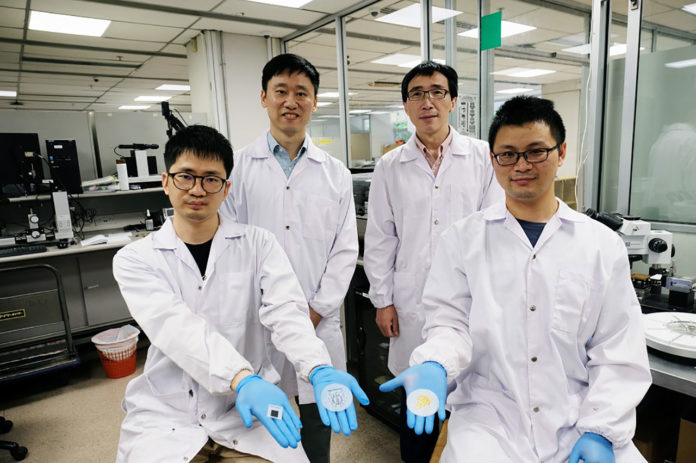The widespread consumption of electronic devices has made spent batteries an ongoing economic and ecological concern.
A team at Nanyang Technological University, Singapore (NTU Singapore), have developed paper-thin biodegradable zinc batteries that could one day become an environmentally sustainable option for powering flexible and wearable electronic systems. Once the battery has been expended, it can be buried in soil, where it breaks down completely within a month.
These zinc batteries are made up of electrodes screen-printed on both sides of a piece of cellulose paper that has been reinforced with hydrogel to fill the gaps between the cellulose fibers. The battery measures just four by 4 cm – at least, one version of it does – and it’s reportedly capable of powering a small electric fan for 45 minutes. Bending or twisting the battery did not interrupt the power supply.
In another experiment, the NTU team demonstrated a 4cm x 4cm battery used to power an LED. They showed that despite cutting away parts of the paper battery, the LED remained lit, indicating that cutting does not affect the functionality of the battery.
To develop a thinner, lighter prototype with no packaging required, researchers adopted a sandwich design for their batteries – the electrodes are like the bread slices, and the cellulose paper that the electrodes are printed on is like the sandwich filling. The fabrication process starts with reinforcing cellulose paper with hydrogel to fill up the fiber gaps found naturally in cellulose. The paper serves as the separator between the two electrodes, which are formulated as ‘electrode inks’ and screen-printed onto both sides of the hydrogel-reinforced cellulose paper.
The anode ink is mainly made up of Zinc and carbon black, while both manganese and nickel have separately been used for the cathode ink. After the electrodes are printed, the battery is immersed in an electrolyte. A layer of thin gold foil is then coated on the electrodes to increase the conductivity of the battery. The final product is about 0.4mm thick – about the thickness of two strands of a human hair – and it gets thoroughly broken down by microorganisms within a month after being placed in the soil.
“When decomposition happens, the electrode materials are released into the environment,” said Professor Fan Hongjin, the study‘s co-lead author. “The nickel or manganese used in the cathodes will remain in their oxide or hydroxide forms, which are close to the form of natural minerals. The Zinc found in the anode will be naturally oxidized to form a non-toxic hydroxide. This points to the battery’s potential as a more sustainable alternative to current batteries.”
The researchers envision that their paper-thin printed battery could be integrated into flexible electronics such as foldable smartphones that are already on the market or biomedical sensors for health monitoring.
